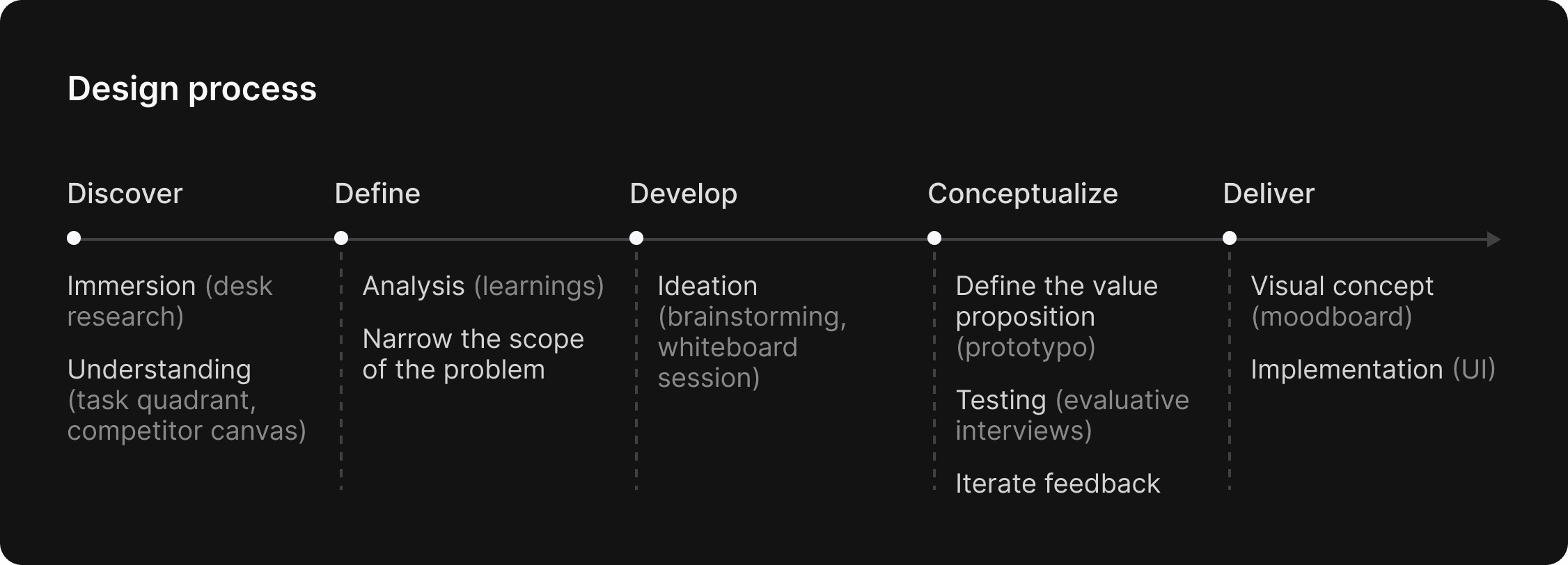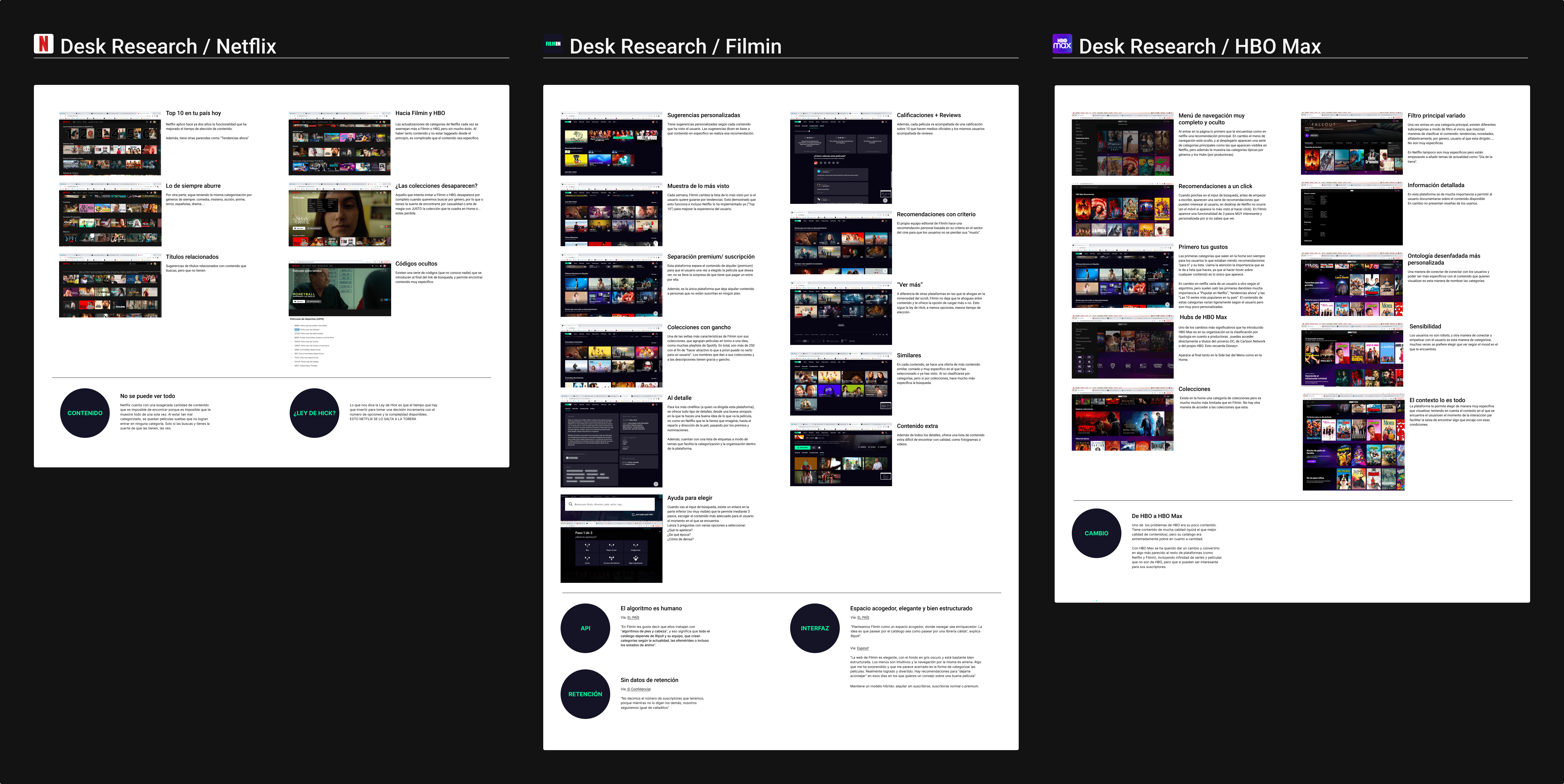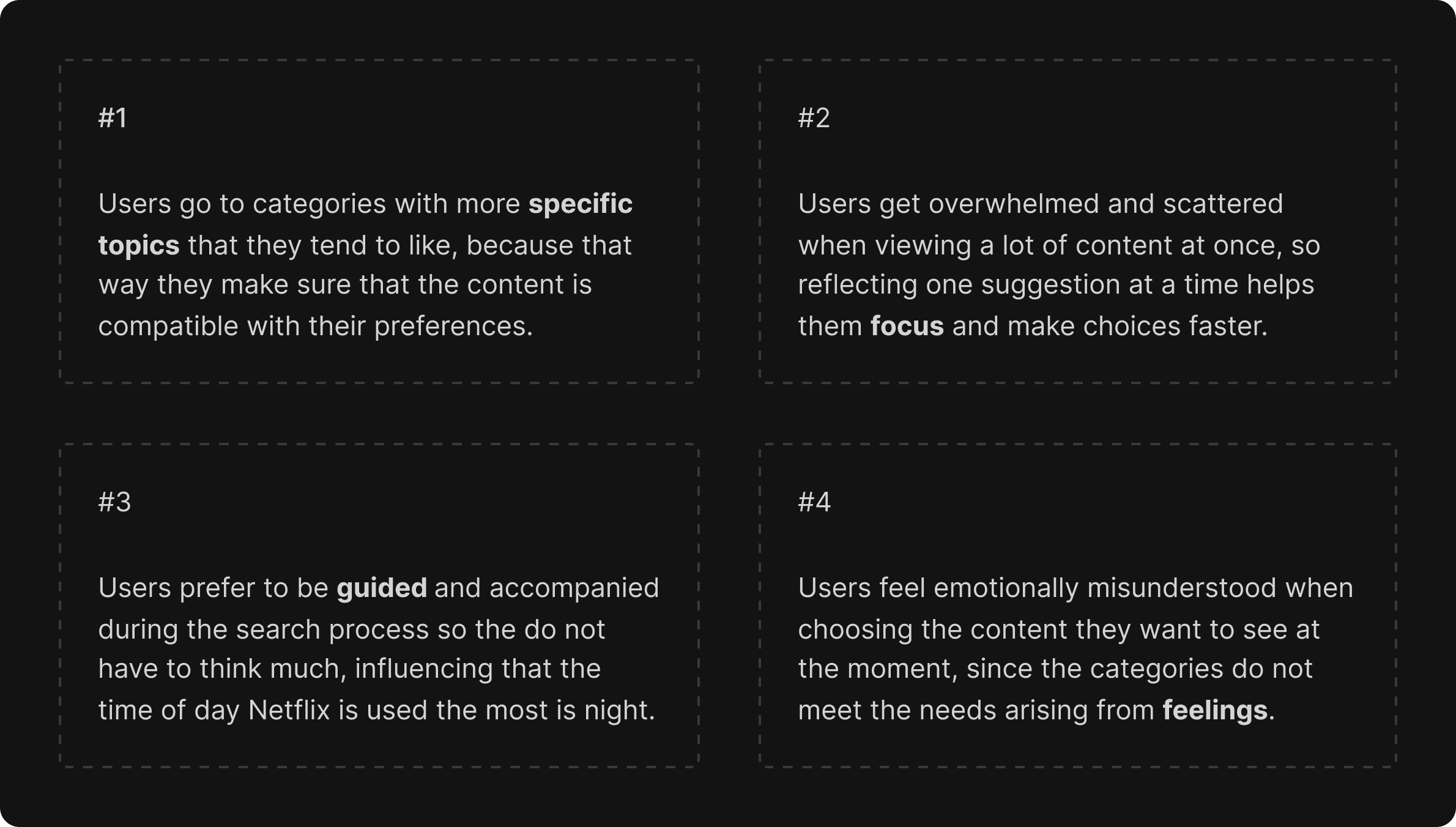Netflix’s new functionality
Netflix’s new
functionality
Netflix’s new
functionality

Netflix’s catalog continues to grow exponentially and with it, the difficulty for users to find out what to watch, in addition, main lists such as "The most watched in your country", on many occasions, do not fit with the tastes of users. Therefore, the goal is to create a solution to reduce the time of choice and improve retention.
Netflix’s catalog continues to grow exponentially and with it, the difficulty for users to find out what to watch. In addition, main lists such as "The most watched in your country", on many occasions, do not fit with the tastes of users. Therefore, the goal is to create a solution to reduce the time of choice and improve retention.
Netflix’s catalog continues to grow exponentially and with it, the difficulty for users to find out what to watch. In addition, main lists such as "The most watched in your country", on many occasions, do not fit with the tastes of users. Therefore, the goal is to create a solution to reduce the time of choice and improve retention.
Netflix’s catalog continues to grow exponentially and with it, the difficulty for users to find out what to watch. In addition, main lists such as "The most watched in your country", on many occasions, do not fit with the tastes of users. Therefore, the goal is to create a solution to reduce the time of choice and improve retention.
Duration
Duration
Duration
Duration
Four weeks (two sprints)
Setting
Setting
Setting
Student project in partner
Goal
Goal
Goal
Validate a concept idea with real users and build an MVP




In the first two-week sprint, the entire process was carried out until a concept idea was obtained, and its evaluation with the sample selected in the research.
When defining the value proposition, it was necessary to carry out a user flow to correctly establish the path through the screens of the different users.
When defining the value proposition, it was necessary to carry out a user flow to correctly establish the path through the screens of the different users.
To deepen the understanding of audiovisual content platforms and find potential points for improvement, the two main competitors today were analyzed:



After preparing a script and the prototype with the design proposal, 4 evaluative interviews were held to validate the concept idea.




In the first two-week sprint, the entire process was carried out until a concept idea was obtained, and its evaluation with the sample selected in the research.
To deepen the understanding of audiovisual content platforms and find potential points for improvement, the two main competitors today were analyzed:


The dump, categorization and analysis of the information obtained, confirmed several hypotheses previously raised and revealed a series of important aspects to take into account such as:
During navigation, the user can adapt the experience to their needs and tastes (and those of the recipient), being able to choose, for example, between several menus.
During navigation, the user can adapt the experience to their needs and tastes (and those of the recipient), being able to choose, for example, between several menus.
During navigation, the user can adapt the experience to their needs and tastes (and those of the recipient), being able to choose, for example, between several menus.




There are two ways to access the functionality, through a permanent section in the nav bar, from which a pop-up pops up after five minutes of searching, a time limit before the user feels frustrated; the other way is through a CTA within a prominent section on the home page.


The functionality designed consists of three simple steps, like a questionnaire, to help quickly find audiovisual content of interest. The final result, once the user feedback has been applied, is as follows:
Finally, the five suggestions that come closest to the filters that have been applied are shown one by one, and as a last option, you can see all the results that fall within those parameters.
The first step of the functionality refers to different types of content to display, the second to emotions and what the user wants the content to convey at that moment, and the third to specific topics. This last step, on the one hand, follows the algorithm to get closer to the users’ taste, and on the other hand, suggests different topics to be able to also get out of it and find new things.
The functionality designed consists of three simple steps, like a questionnaire, to help quickly find audiovisual content of interest. The final result, once the user feedback has been applied, is as follows:
There are two ways to access the functionality, through a permanent section in the nav bar, from which a pop-up pops up after five minutes of searching, a time limit before the user feels frustrated; the other way is through a CTA within a prominent section on the home page.


The first step of the functionality refers to different types of content to display, the second to emotions and what the user wants the content to convey at that moment, and the third to specific topics. This last step, on the one hand, follows the algorithm to get closer to the users’ taste, and on the other hand, suggests different topics to be able to also get out of it and find new things.
Finally, the five suggestions that come closest to the filters that have been applied are shown one by one, and as a last option, you can see all the results that fall within those parameters.
The functionality designed consists of three simple steps, like a questionnaire, to help quickly find audiovisual content of interest. The final result, once the user feedback has been applied, is as follows:
There are two ways to access the functionality, through a permanent section in the nav bar, from which a pop-up pops up after five minutes of searching, a time limit before the user feels frustrated; the other way is through a CTA within a prominent section on the home page.

The first step of the functionality refers to different types of content to display, the second to emotions and what the user wants the content to convey at that moment, and the third to specific topics. This last step, on the one hand, follows the algorithm to get closer to the users’ taste, and on the other hand, suggests different topics to be able to also get out of it and find new things.
Finally, the five suggestions that come closest to the filters that have been applied are shown one by one, and as a last option, you can see all the results that fall within those parameters.
The functionality designed consists of three simple steps, like a questionnaire, to help quickly find audiovisual content of interest. The final result, once the user feedback has been applied, is as follows:
There are two ways to access the functionality, through a permanent section in the nav bar, from which a pop-up pops up after five minutes of searching, a time limit before the user feels frustrated; the other way is through a CTA within a prominent section on the home page.


The first step of the functionality refers to different types of content to display, the second to emotions and what the user wants the content to convey at that moment, and the third to specific topics. This last step, on the one hand, follows the algorithm to get closer to the users’ taste, and on the other hand, suggests different topics to be able to also get out of it and find new things.
Finally, the five suggestions that come closest to the filters that have been applied are shown one by one, and as a last option, you can see all the results that fall within those parameters.
Contact
Send me a message, I will be glad to answer you as soon as possible.
Contact
Send me a message, I will be glad to answer you as soon as possible.
Contact
Send us a message and we'll help out as soon as we can.
Contact
Send us a message and we'll help out as soon as we can.

